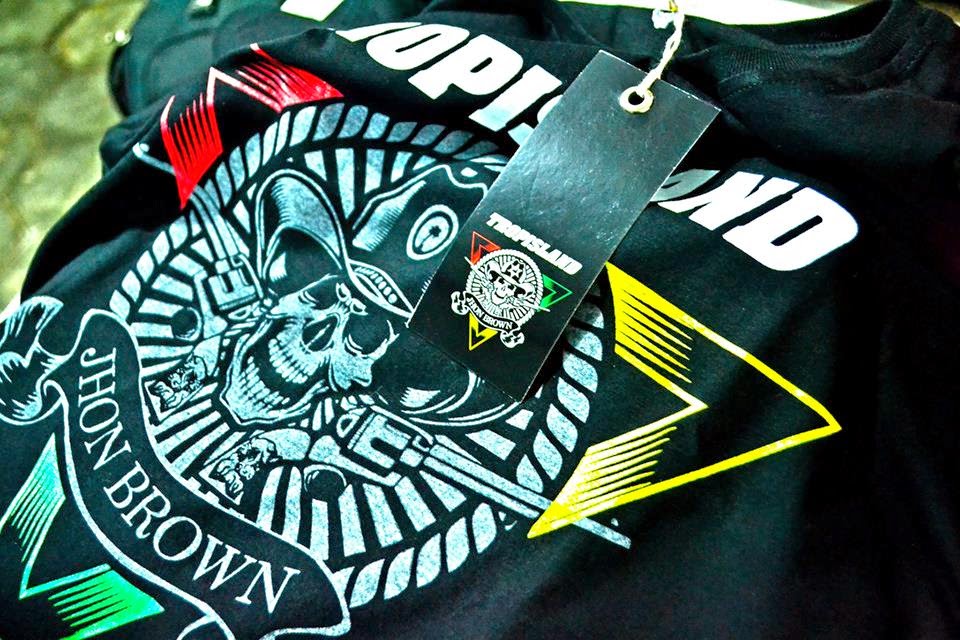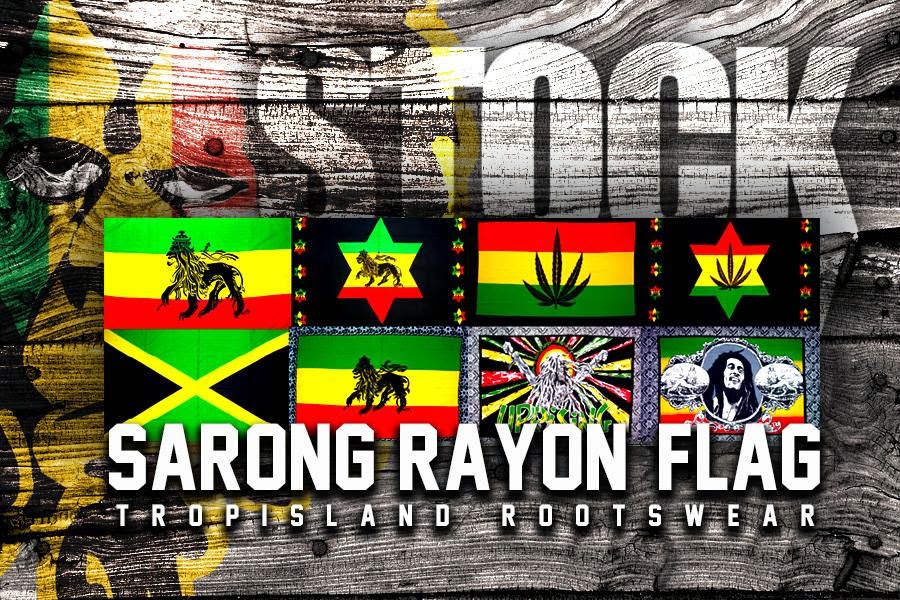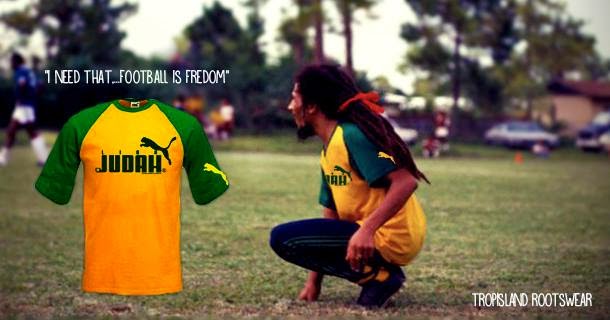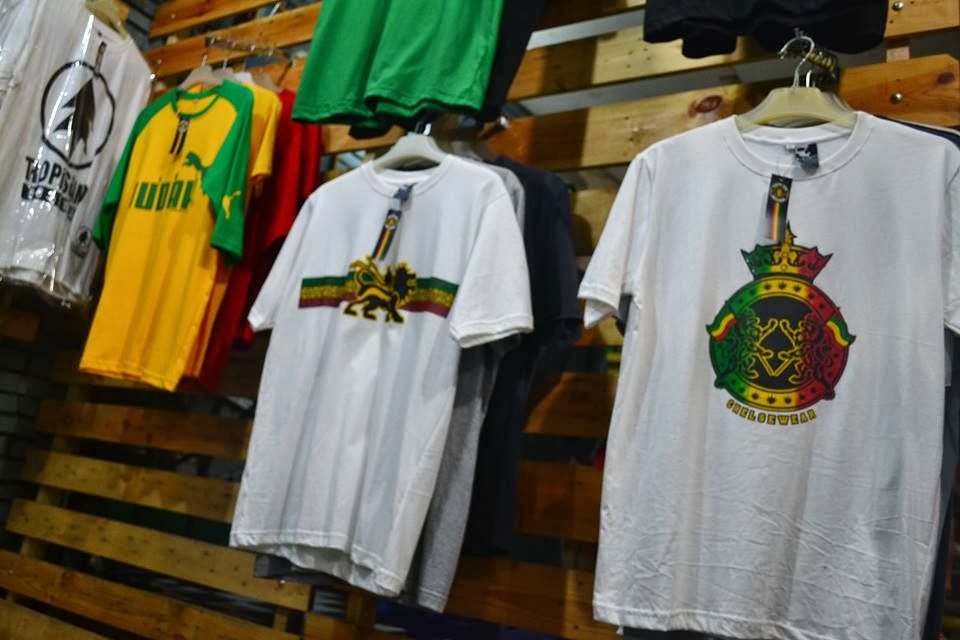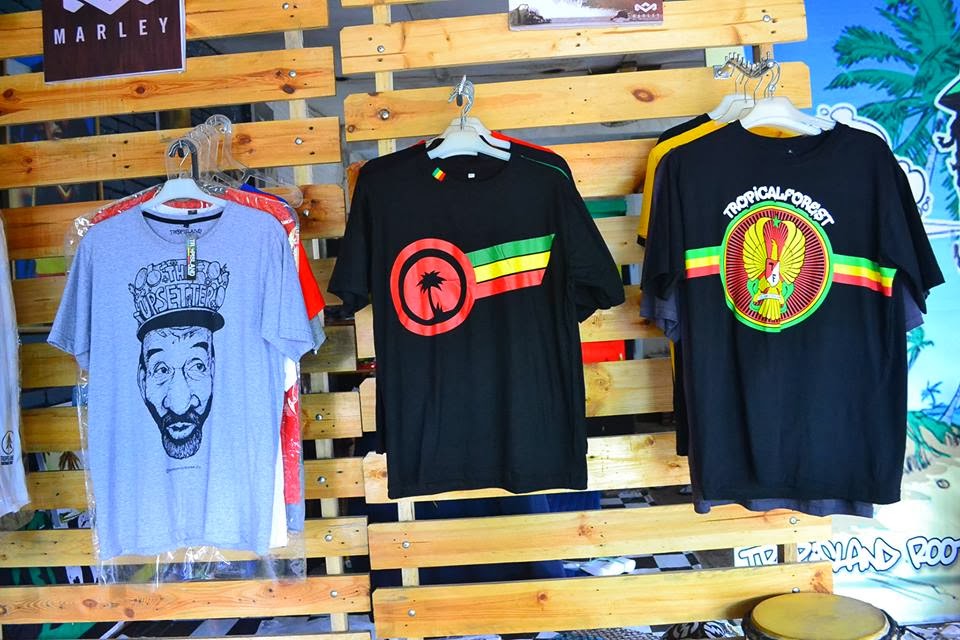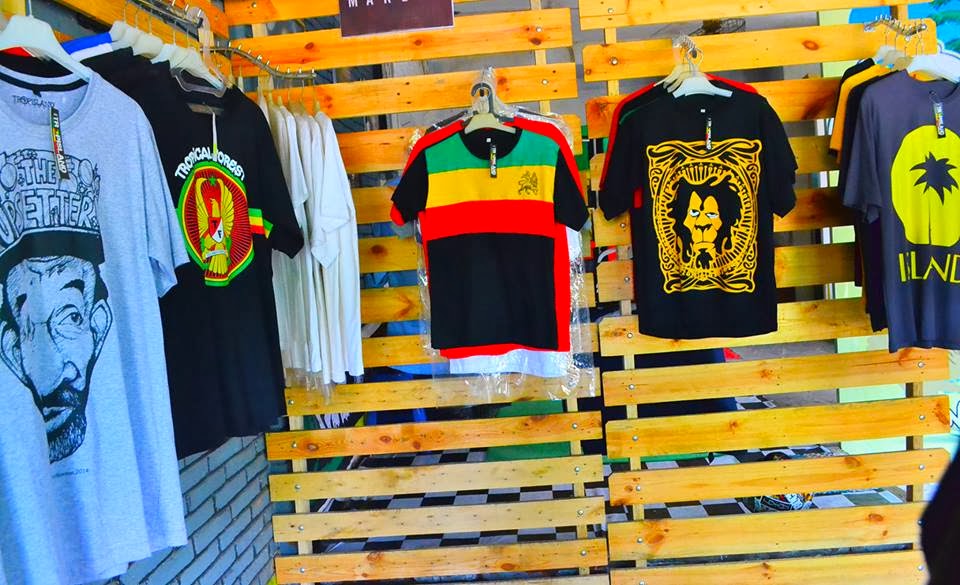Buffalo Soldier-Dreadlock Rasta?The Buffalo Soldier of the West and the Elimination of the Native American Race
Matthew Mullin
When black men first enlisted in the United States army, they were thought to be crazy. These were the men, who just a few years before, were being persecuted because of the color of their skin. Throughout time, the black man has suffered in more ways than we could imagine. The white man stole them from their homeland only for the sole purpose of making money. They were thought to be hard workers and very loyal. However, after the Civil War and the emancipation of slavery, there became some perceptions of the black man that had never been seen or heard before. Even though they were still thought to be inferior, they still gained some respect on the part of the white community. In 1864, the President of the United States, Mr. Abraham Lincoln wrote a statement concerning the black troops enlisted in the U.S army. With the sympathy of the president, this is what was written:
The black soldiers in the Civil war had so heroically vindicated their manhood on the battlefield where, in assisting to save the life of the republic, they have demonstrated in blood their right to the ballot…." (Cashin and others 1969 p.i)
This message was the forthcoming of a new perception of the black man. With the help of President Lincoln, the black man felt that they were on their way to freedom and equality. However, after the assassination of the "Great Emancipator" the black man’s hopes and dreams seemed to fade faster than they were built up. With the signing of the Emancipation Proclamation, President Lincoln had given the black man one of America’s highest standards for being considered free. He gave them the right to vote. However, since the assassination, the southern black man could not vote because of the stipulations that the white southerners put on the voting system. Therefore, the black man could only hold on to the last shred of freedom that he was given the right to have. Because of their gallant efforts put forth in the Civil War, the black man was still allowed to serve in the United States army.
In 1866 a bill was passed by Congress to allow the formation of an all black regiment. In all there would be several different regiments comprised of only black soldiers. The regiments were formed by the black enlistees and usually the duties were carried out by a white officer. Of all of the jobs and professions put forth to black people at the time, soldier was probably the most revered of all the professions. Being a soldier was the only job for the black man where he could get the opportunity to roam and explore, and sometimes even earn the respect of some white individuals that they helped along the way. This job and opportunity was the closest thing the black man had to freedom since he was stolen from Africa. However, with the respect this occupation brought, there were some pitfalls to it also. Many of these all black regiments were used in the elimination efforts of the United States army of the Native American culture. The fact of the matter is that this was just another way for the white man to subdue another supposedly "inferior" culture. Throughout time the white man has oppressed many different cultures and people. Often many times the white man used a people that they had already conquered only to conquer another civilization of supposedly "inferior" people.
With the coming of the white man to the western world, there also came much oppression, slaughter, and servitude. The white man was the first to have an encounter with Native American culture. Many of these people were peaceful and serene and only wanted to live in harmony with the new white settlers. However, the white man had different ideas in comparison to those of the Native Americans. The white man wanted to divide and conquer. The white man came to North America in search of what many people today call the American way. The white man came in search of riches and money. They came here to satisfy their insatiable hunger for expansion and riches. But there was absolutely no way that they could achieve this by themselves. This unfortunately is where the black man comes in. After the white man had pushed many of the Native Americans out of their native territory, with his tom foolery, they decided to expand. Many of these men started to explore this uncharted land. With their desire to win the almighty dollar, the white man expanded south and then west. However, they could not make their move without the help of the black man.
After the first explorers reached the West Indies, they decided to make many of the natives they encountered servants. They brought many natives back to Europe with them to give to royalty and others of such high societal stature. However, many of these natives died from white illnesses brought over from Europe. Therefore the white man needed some help. He looked to the black man in Africa. They then went on a two hundred year rampage against the black man and his culture. They threw the black man and women into roles of servitude and oppression. This became just another group that was seen as expendable to the white man. They looked at these men as the lowest of the low. They even reached lower than Native American. The black man is just another example of the white man taking advantage of an oppressed group. The irony of it all is that the black man was later used in the extermination process of the Native American culture. This is just another way the white man used a group in which they oppressed for the benefit of themselves. The white man recruited the black man to kill off another people that the white man oppressed. The Native American.
With this designation of an all black killing Corp, the United States formed the ninth and tenth cavalry regiments. Even though the black man had served in previous wars, the white officers still felt that the black soldier was inferior to that of the white soldier. One officer in particular believed this more than any other. General William Hoffman believed that the black soldier had no fighting capability and that they were inferior. He also believed that the white officers that were in charge of these regiments were inferior too. This led to the cruel treatment of the black soldiers and their commanders. They were given small rations. Their quarters were in wet, swampy areas, and they were generally treated like crap. However, there was a man who did enjoy his troops and felt the need to say something about the cruel treatment that they were receiving. Colonel Grierson protested to the Department Headquarters looking for impartial treatment of his men. "By August 1867, the regiment moved west and began a period of more than twenty years of continuous service on the western frontier" (Cashin and others 1969 pp.ii). This service included fighting some of the most vicious and brutal criminals and outlaws in the west.
These black regiments fought many different tribes of Native Americans, such as the Cheyenne, the Apache, and the Comanches. They also fought against Mexican bandits and marauders. "A major part of their service included helping control civil unrest, escorting and protecting survey parties, building roads, stringing telegraph lines and overall making the west a safer place to live. Therefore the Indians respectfully called them "Buffalo Soldiers" after the buffalo, an animal the plains tribes considered sacred" (Cashin and others pp.ii). They were called Buffalo Soldiers out of respect from the Native Americans. They were called this because of their fierce fighting style, the color of their skin, and mainly because of the way their hair looked. It was curly, thick, and matted, just like that of a buffalo’s hair.
When speaking of the work the black soldiers Grierson makes it clear that these men are more than ample soldiers. He realizes their worth and explains their value in the following lines:
"Always in the vanguard of civilization and in contact with the most warlike and savage Indians of the Plains, the officers and men have cheerfully endured many hardships and privations in the midst of great dangers steadfastly maintained a most gallant and zealous devotion to duty, and they may well be proud of the record made, and rest assured that the hard work undergone in the accomplishment of such important and valuable service to their country is well understood and appreciated, and that it cannot fail, sooner or later, to meet with due recognition and reward." (Cashin and others p.25)
The main purpose behind forming the Buffalo Soldier regiments was to subdue wild, hostile, and supposedly "savage" Native Americans for the purpose of advancing the civilization of the Western world. Many people were against these campaigns however. This is because many of the advocators against the Buffalo Soldiers were slow to acknowledge the black soldier’s worthiness to participate in the battle for freedom. What makes this ironic is that many of the Buffalo Soldiers possessed hero qualities, in the fact that they risked their lives for a country that really didn’t acknowledge them as men. But, the government considered them good soldiers because of their power for "physical endurance of hardships and their healthy physical development. Therefore, the Buffalo Soldiers carried out their duty without so much as a cry or a moan. They were said to be the hardest working regiments in the cavalry.
According to my sources, the Buffalo Soldiers were said to have worked seven days a week and every day of the year except for the 4th of July and Christmas. To show their dedication to their jobs, the soldiers only received thirteen dollars a month. They originally received sixteen, but in 1871 the government dropped their salaries to only thirteen. I can’t even begin to imagine having to live on thirteen dollars a month. I mean, this was starting fees for privates, but still. The privates were probably the men who were doing the dirty work. They were probably digging trenches and stringing the telegraph wire, not the officer, who probably received a healthy sum above that of his soldiers.
In many cases I find it hard to believe that the black soldiers fought for this country. In so many ways this country, the white man and his government have played with the lives and freedom of the colored races. In so many ways, we the white people have oppressed millions. In so many ways, we the white race have stripped away the essential pieces of life and liberty. These are the things that make a man a man. And to think that we have the audacity to ask a group of people whom we have oppressed for a couple hundred years to fight so we the white people can expand west. This is probably one of the things about these men that intrigues me the most. I think that these men were really some of the first freedom fighters. However, their freedom usually came at the cost of someone else. That someone else was the Native Americans.
In many cases the Buffalo soldiers were a fierce adversary of the Native Americans. Many times the Buffalo Soldiers had to ward off marauding bands of Native Americans. I believe that you cannot blame the black regiments however. This is because the black regiments were only doing their job. Insubordination was not looked upon highly in the black regiments. Therefore, if they followed their orders, then they had had made one more step toward their freedom. But, like I said before, usually at the expense of the Native Americans. There is one source that tells of an instance at Wounded Knee Creek, where William Forsythe and his seventh cavalry(white cavalry) slaughtered over three hundred Native American women and children. To make things worse, all of these people were unarmed. They were then lined up and mowed down by rifles and Hotchkiss guns. This was a mass execution of innocent people.
To prove my point, Forsythe and his troops later ran into trouble at Beaver Creek in Kansas. A band of Native Americans surrounded them on a small patch of sand in the middle of the creek, and systematically killed almost every soldier. However, the Buffalo Soldiers came to a humiliating rescue for the seventh cavalry, saving Forsythe and his troops (Churchill p.244, 1997). This just goes to show how the white man can control the oppressed to help with the fight against another oppressed. Most of the soldiers that were rescued by the black regiment were embarrassed that they needed the help of black men.
The white man used the Buffalo soldiers as a vehicle to systematically eliminate the Native American people. After the battle at Wounded Knee there was a quote by L. Frank Baum, who later went on to write the Wizard of Oz. This quote was a general feeling of hatred for the Native American people. The quote was on the behalf of many of the white citizens of America. I think it sums up the brutality and the hatred that the Native Americans had to go through. The Buffalo Soldiers were simply a way for the white man to take that hatred out on the Natives of America. The quote states:
The nobility of the Redskin is extinguished…The Whites, by law of conquest, by justice of civilization, are masters of the American continent, and the best safety of the frontier settlements will be secured by the total annihilation of the few remaining Indians. Why not annihilation? Their glory has fled, their spirit broken, their manhood effaced; better that they should die than live the miserable wretches they are." (Churchill, p.244, 1997)
Even though I think that the Buffalo Soldiers were used only for the benefit of the white people, I still don’t believe that they were wrong for joining the cavalry. In the book New Mexico’s Buffalo Soldiers(Billington), often the Native Americans would instigate the fighting. In many cases the Natives were looking to steal livestock, especially horses. By stealing horses, this would enable the Native Americans to take away the cavalry’s feet from under them. Horses were the integral part of the cavalry. So, if the cavalry couldn’t get around, this would allow the Native Americans more time on the move(p.7). The post commander Cummings at Cooke’s Peak NM wrote: "They could run faster and hide quicker than we could and it being impossible to get them to fight, we failed to kill any, or if we did they carried their dead along with them (Billington p.7)."
The previous paragraph illustrates that the Buffalo Soldiers did try to intentionally kill the native bandits. My problem is that these men were good men. They were probably the most worthy of praise out of all the cavalry men. I believe that even though they were killing the Native Americans, they were doing this to ensure their own freedom. But at the same time, they were taking the freedom from the Native Americans, if they even had any left.
I think that this is one of the hardest papers that I’ve had to write. It challenges a lot of the original research that I set out to do. When thinking about what approach I would take, I figured that I would just give a basic overview of a Buffalo Soldier. I believed that their heroism went virtually unknown. But, when I began researching, I found a lot of evidence showing the brutality which the Native Americans went through. I know that the Buffalo Soldiers were noble and fought courageously, but I cannot give them total praise because of the job they were sent to do. The annihilation of a race is wrong, and it was all at the hands of the white man. The white man just sent the Buffalo Soldiers to finish their dirty work.
I then began to think about the lyrics of the song "Buffalo Soldier" by Bob Marley. I was thinking about what Bob Marley was trying to say through this song. The song is about some of the black regiments that served in the United States army, in particular the ninth, tenth, twenty-fourth, and twenty-fifth regiments. The ninth and tenth cavalries spent their time in the west, providing protection against the Native Americans. The twenty-fourth and twenty-fifth infantries were part of a fighting Corp that went to Cuba under Theodore Roosevelt, to fight an uprising on San Juan Hill.
The song speaks about the fourteen Buffalo Soldiers that received the Medals of Honor. This was an attempt by the United States government to "justify and glorify" the killing of Native Americans, underlining the United States government’s policy of manifest destiny2. When I finally found the lyrics, I began reading them, and I think that Bob Marley took the same outlook as I do. He thinks that the Buffalo Soldiers were used as a tool for the white man’s greed. Bob Marley wrote:
… I mean it, when I analyze the stench
To me, it makes a lot of sense
How the Dreadlock Rasta was the Buffalo Soldier
And he was taken from Africa, brought to America
Fighting on arrival, fighting for survival3…
He knew that there was something about the whole idea of the regiment that just didn’t seem right. He knows that the black soldiers were once Africans, and they had been plucked from their homeland only to work on the white man’s behalf. He knows that they needed to fight to survive, he just doesn’t think they should have. So why should they have to fight for the white man’s problems? I think what Bob Marley is trying to say is that often the black man gets the bad wrap. The white men used the Buffalo Soldiers as a way to cover up the genocide of the Native American people.
When researching this topic I found many truths to be uncovered. I guess not necessarily uncovered, but I certainly learned something new. I just assumed that a Buffalo Soldier was a really good thing because Bob Marley sang a song about them, and in some ways they are. They fought to help with the expansion of our country. They were inspirational figures to other black men who could not be so fortunate as to be in the military. They provided protection for some of the people spurring the western movement. If it weren’t for their bravery we probably wouldn’t have our fifty states. However, they were also involved in what I believe to be one of the most immoral acts of ethnic cleansing ever.
The Buffalo Soldier is not to blame however. They were only worried about their people, not the Native Americans. The Buffalo Soldiers were fighting the Native Americans so they could finally get their freedom. In the late 1800's the black man was considered the lowest of the low. They basically did anything they could to lose that stigma. The United States stigmatized the black man into believing that he had to fight to become a part of society. It's like Bob Marley said, "Buffalo Soldier, trodding through the land, Said he wanna ran, then you wanna hand, trodding through the land3." Bob knew that the black man didn't need to help in the campaigns, but they did. Even though they fought against whom I believe to be an innocent people, they still fought bravely. They built the west. They were the unrecognized heroes. All of the men that were white and received praise for their heroism, what about the black men? These are the men who went out and got their hands dirty, while men like Custer and Forsythe sent their murderous commands to the front line. The men that deserve praise are the black men and also the Native Americans. The black soldiers should be honored for providing the protection we needed to help expand this country. The Native Americans deserve the most praise however. They fought courageously and tirelessly to defend their native land. Geronimo, the great Apache warrior once said, "…I know that it is better to submit to great wrongs than to fight the United States.(Cashin and others p.42)"
"…He’ll march all night,
and he’ll march all day,
and he’ll wear out a
twenty mule team along the way…"(David, Livingston)
This describes how many people felt about the Buffalo soldiers. They were a hard-working, loyal, and courageous group of men. They came from all walks of life to defend a country and people who were not even aware that they existed. These men worked hard to fight injustice in the West. They became trailblazers of the African American movement toward freedom and equality even though they had no clue that they were doing anything special. The Buffalo soldiers of the Midwest were an important part of history that seem to be neglected because of the color of their skin. They provided much support and security to the ever expanding western territory. They played an integral part in the expansion of the country west. They traversed some of the harshest land known in North America only to be known through a famous reggae tune. These men were freedom fighters that provided their services and lives to something in which they believed, the emancipation of every man. This paper is a dedication to the brave men who fought for our country and went virtually unknown by the American public for so many years.
The above quote comes from a song called "Captain Buffalo" by Mack David and Jerry Livingston. It is an example of the pride and dedication these soldiers had in their work. Even though they were treated with harshness and cruelty, they still followed orders and fulfilled their duties as United States cavalrymen. This excerpt from the song talks about the work ethic of the buffalo soldiers. They worked tirelessly and endless days to support themselves. So when the song tells about wearing out a twenty mule team, it is probably true. The buffalo soldiers worked well over twelve- hour days, seven days a week, and every day of the year except Independence Day and Christmas. It’s no wonder they weren’t well known, it’s because they were constantly on the go.
The Buffalo soldiers were various groups of African American soldiers brought together to form patrol units on the American western frontier. In many cases their services were taken up to control hostile Native Americans, Mexican revolutionaries, outlaws, comancheros, and rustlers1. Overall there were two cavalry and four infantry regiments. In the later stages of the units, this number was struck down to two. The buffalo soldiers didn’t only subdue criminals however. They played the role of cartographers for the southwest region of the country. They laid hundreds of miles of telegraph lines. By building and repairing frontier outposts they were able to spur the clustering of small towns and villages around these establishments which they built. Many of these assignments don’t sound important, but let’s remember that throughout all of their work, they were facing some of the hottest and harshest weather that you could imagine. Also the fact that they were under siege by marauding bands of hostiles didn’t help their cause either. The buffalo soldiers of the frontier provided a sense of dignity and respect for the African American soldier through the tasks they performed. So to say that they played a small role in the building of this country is an understatement.
The black regiments had a lower desertion rate than four white regiments respectively in the 1876 (Leckie p.178). They were a determined band of freedom-fighters. Even though some of their work details were inhumane, these men went virtually unknown for their heroism. I think that Sergeant Horace W. Bivins put it best in describing the Buffalo Soldiers. He said:
"There is no people on earth more loyal and devoted to their country than the Negro. I believe in the doctrine of peace taught by the lowly Nazarene, but men must have liberty, before abiding peace can come. Force saved the Union, kept the stars in the flag and made Negroes free…
God grant the time when this country will have the power to enforce the teaching of the heavenly doctrine that all men are created free and equal…"(Cashin and others p.76)
The Buffalo soldiers fought for their freedom. They didn't know that they were being used by the government to eliminate a race. They were only there to do one thing, earn their freedom. For this I respect them. They fought hard against the Native American for years. They were fighting to earn the rights which the white man had already attained. It just happens to be that the Buffalo Soldiers won the struggle for freedom.
As I depart I'd like to say that both the Buffalo Soldier and the Native Americans were innocent bystanders in the mass destruction of land and people in the west. The white man used these two groups of men against each other to get what they wanted, sovereignty of the west. The Native American warriors, women and children were often killed brutally sparing no mercy upon them. The Buffalo soldiers died heroically to fight for something that they should have had in the first place, freedom. I would like to end the paper with a quote from Geronimo. It sums up the idea that the white men were the purveyors of all that was bad in the world. In many instances throughout my research I found sources referring to the Native Americans as "Red Devils," and the buffalo soldiers as niggers or Negroes. And the white man escapes unscathed. He used each group to his benefit, stealing the Native American's land, and using the black man as indispensable soldiers. The quote goes like this:
"The sun rises and shines for a time and then it goes down, sinking out of sight and is lost; so it will be with the Indians. When I was a boy my old father told me that the Indians were as many as the leaves on the trees, and that way off in the North they had many horses and furs. I never saw them, but I know that if they were there they have gone now, and the white man ha taken all they had…"(Cashin and others p.42)
Bibliography
Billington, Monroe L. New Mexico's Buffalo Soldiers, 1866-1900. University Press of Colorado, 1991. pp.3-25, 43-109
Cashin, Herschel V. and Others Under Fire with the Tenth U.S. Cavalry. Arno and New York Times, 1969. pp.25-6, 41-2, 76
Churchill, Ward A Little Matter of Genocide: Holocaust and the Denial in the Americas, 1492 to the Present. City Light Books S.F., 1997. pp164-6, 244n., 401-2
Jackson Dunlop, Sara, and W.L. Katz. Introduction. Under Fire with the Tenth U.S. Cavalry. By Herschel Cashin and others. New York: Arno and New York Times, 1969. i-v
Kenner, Charles L. Buffalo Soldiers and the Officers of the Ninth Cavalry, 1867-1898: Black and White Together. Norman: UP of OK, 1999. pp.53-83
Leckie, William A. The Buffalo Soldiers: A Narrative of the Negro Cavalry In the West. Norman:UP of OK, 1967. pp.45-81
Schubert, Frank N. Black Valor: Buffalo Soldiers and the Medal of Honor. Scholarly Resources Inc,Del. 1997. pp.163-173
Public Law 102-331. August 3, 1992. Joint Resolution 106 STAT.851
Government Document. Fort Myer's Buffalo Soldiers.
Bobmarley.com/songs.cgi?buffalo 4/13/00
International Museum of the Horse www.imh.org/imh/buf/buf1.html 4/11/00
International Museum of the Horse www.imh.org/imh/buf/buf2.html 4/11/00
International Museum of the Horse www.imh.org/imh/buf/buf3.html 4/11/00
International Museum of the Horse www.imh.org/imh/buf/buf4.html 4/11/00
International Museum of the Horse www.imh.org/imh/buf/buf5.html 4/11/00
The Buffalo Soldier Project www.femalebuffalosoldier.org/projectbackground.html 4/11/00
The Buffalo Soldier Project www.femalebuffalosoldier.org/historytakesnotes.html 4/11/00
National Archives and Records Administration www.nara.gov/publications/record/mar98/buffalo.html 4/11/00
Smithsonian Museum www.smithsonianmag.com/smithsonian/issues98/dec98/buffalo.html 4/11/00








